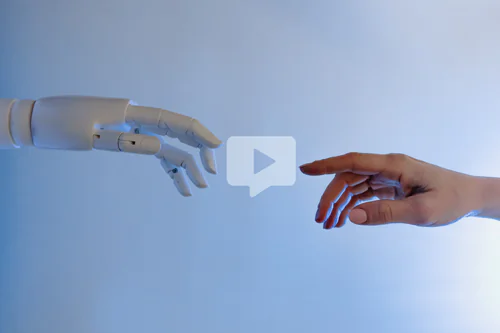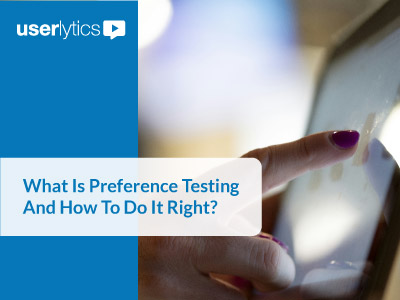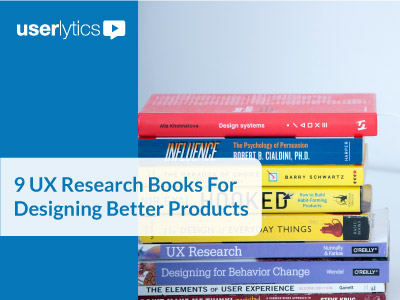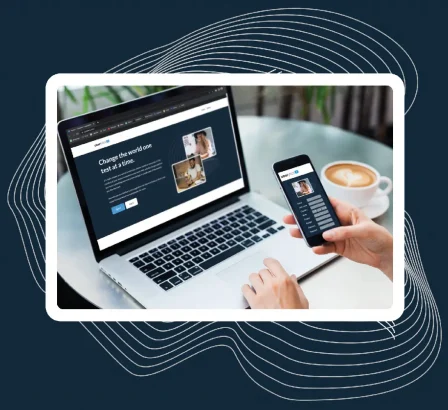AI for UX Research
User Experience (UX) has become a critical differentiating factor for businesses. To meet users’ evolving expectations, UX research plays a pivotal role in understanding user behavior, pain points, and preferences.
In this context, with the rapid advancements in Artificial Intelligence (AI), UX research has undergone a transformative revolution, enabling UX researchers to delve deeper into analyzing data, streamline processes, and deliver enhanced user experiences.
So, how is Artificial Intelligence changing the UX landscape in terms of design? How can UX researchers leverage this technology —and others like machine learning and data science— to design and develop user-centered digital experiences that have value for companies and clients?
What is Artificial Intelligence — an Expert Definition

According to TechTarget.com, AI, or artificial intelligence, is the simulation of human intelligence processes applied to machines, usually computer systems.
Basically, AI tries to make computers able to do the things human minds can. Most AI systems work by taking in large amounts of “training” data, learning to recognize patterns from this data, then applying these patterns to make predictions in real-world settings.
Artificial intelligence (AI) refers to the field of computer science that focuses on the creation and development of intelligent machines capable of performing tasks that would typically require human intelligence.
AI encompasses various subfields, such as machine learning, natural language processing, computer vision, robotics, and expert systems.
The goal of AI is to enable machines to simulate human cognitive processes, such as learning, reasoning, problem-solving, perception, and decision-making.
AI systems are designed for analyzing data in huge amounts, extracting meaningful patterns and insights, and making autonomous or semi-autonomous decisions based on available information.
The subsets and applications of Artificial Intelligence
Machine learning, a prominent subset of AI, involves training algorithms with data to recognize patterns and make predictions or take actions without explicit programming.
Deep learning, a specific type of machine learning, utilizes artificial neural networks inspired by the human brain’s structure and function to achieve higher levels of accuracy in tasks like image and speech recognition.
AI technologies have found applications in numerous fields, including healthcare, finance, transportation, customer service, manufacturing, and entertainment.
Some examples of AI applications include virtual assistants (e.g., Siri, Alexa), recommendation systems (e.g., Netflix, Amazon), autonomous vehicles, image recognition systems, and medical diagnostic tools.
It’s important to note that AI is a rapidly evolving field, and its capabilities and applications continue to expand as researchers and developers make advancements in technology.
Why and How is Artificial Intelligence being used in UX?

In the context of User Experience, AI is slowly becoming more popular as a supplementary tool used in research and design phases.
While AI has the potential to be used in creative processes, designers have mainly used the tool to increase automation, productivity, and personalization of user experiences.
The use of AI amongst teams can also promote collaboration and communication, enrich research development, and improve design efficiency.
Automated user testing
AI can automate various aspects of user testing, making it more efficient and scalable. For example, AI-powered user testing tools can conduct usability tests, eye-tracking studies, and sentiment analysis without the need for human intervention. This helps UX researchers gather customer feedback quickly and at a larger scale.
AI-powered user testing can quickly analyze large volumes of user data, enabling faster testing cycles and accelerating product development. It eliminates the need for manual data processing, saving time and effort.
Further, traditional user testing has some pain points such as recruiting participants, setting up physical testing environments, and hiring human moderators. AI-based testing reduces these expenses by automating various aspects of the process, making it more cost-effective in the long run.
More importantly, AI algorithms can provide unbiased and consistent analysis of user behavior and feedback. By removing human bias, AI helps ensure that user testing results are based on objective data, leading to more reliable insights and actionable recommendations.
Data collection and analysis
AI has the ability to analyze large data sets faster than humans, allowing data analysis from millions of sets to uncover more insightful and in-depth conclusions.
For example, AI could be used to analyze hundreds, thousands, or millions of qualitative and quantitative user experience studies and discover patterns and insights more quickly than a human UX researcher could.
Through AI-powered analytics tools, UX researchers can gather insights from various sources, such as user interactions, feedback, social media, and more. This allows for a deeper understanding of user behavior, preferences, and needs.
In terms of design, using AI to analyze large quantities of data reduces human error and saves time, letting designers concentrate on creating more personalized interfaces. A painless, personalized experience equals greater customer loyalty and willingness to recommend.
Customer Segmentation
As mentioned above, using AI can dramatically improve UX personalization. This provides companies the opportunity to get ahead of the competition, as users will flock toward companies they feel a closer connection with.
Data analysis through AI is facilitating a more precise customer segmentation, giving UX designers more insights to work with. This, ultimately, gives user research specialists the ability to provide a more personalized experience to more people.
AI enables personalized user experiences by leveraging user data and behavioral patterns. UX research process via AI algorithms allows for increasingly granular analysis of user preferences, and tailors interfaces to individual users, leading to more engaging and relevant experiences.
AI-driven recommendation systems also enhance personalization by suggesting content or products based on user behavior and preferences.
Visualizations
AI can optimize the design process by quickly creating visualizations, and even wireframes, from designer ideas. Using interfaces such as DALLE2, designers can either articulate or submit rough sketches of their ideas and quickly be given preliminary designs or wireframes in return.
Designers can also use AI to leverage historical data in order to quickly create user flowcharts. This capability of AI in UX will further streamline the design process, allowing more time to be spent on creative materials.
Task Automation
In the coming years, expect a surge in the number of companies using AI in such capacities previously mentioned. The automation of repetitive or tedious tasks optimizes the research and design phases of UX development and makes a more personalized experience possible.
When UX designers can allocate tedious tasks to AI, such as data analysis, or using Adobe features to resize and crop images, it frees up time to focus on the creation and personalization of additional interfaces, as well as promoting a more efficient process overall.
From a UX research perspective, leveraging AI to identify patterns and key “Moments of Interest” (MOI) can allow researchers to quickly sift through the increasingly massive amounts of qualitative and quantitative data being generated by advanced remote UX research tools and platforms.
Sentiment Analysis
UX researchers are increasingly leveraging AI techniques to perform sentiment analysis in user research. Sentiment analysis involves analyzing text or other forms of user-generated content to determine the sentiment or emotional tone expressed by users.
In this context, Natural Language Processing (NLP) —a branch of AI— focuses on understanding and processing human language.
UX researchers are employing NLP algorithms to extract meaning from user-generated text, such as survey responses, product reviews, social media posts, and customer support interactions.
NLP techniques help identify sentiment-bearing words, phrases, and contextual cues that indicate positive, negative, or neutral sentiments.
Machine Learning (ML) classification is another AI subset that offers sentiment analysis capabilities. ML algorithms can be trained to classify user sentiment based on labeled data.
UX researchers curate datasets with examples of positive, negative, and neutral sentiments, and then train ML models to automatically classify new text inputs. This enables automated sentiment analysis of large volumes of user feedback.
Emotion Detection
AI models are developed to not only identify sentiment but also detect specific emotions expressed by users. By training ML models on annotated datasets containing emotion-labeled text, UX researchers can uncover emotions like joy, anger, sadness, and surprise.
Emotion detection provides deeper insights into user experiences and helps identify emotional triggers related to specific product features or interactions.
Social Media Monitoring
AI-powered tools are employed to monitor social media platforms and analyze user sentiment toward a product, brand, or specific topics.
These tools employ sentiment analysis algorithms to categorize social media posts and comments as positive, negative, or neutral. UX researchers can then gain valuable insights into public opinion, brand perception, and emerging trends.
Voice and Speech Analysis
AI technologies are utilized to analyze spoken feedback or recordings from user testing sessions. Speech recognition algorithms transcribe audio data, and sentiment analysis models can then be applied to interpret the sentiment expressed in users’ voices.
This approach helps researchers understand emotional reactions in real time, providing additional insights into user experiences.
Image and Video Analysis: AI techniques can be extended to sentiment analysis of visual content. Computer vision algorithms are employed to analyze images and videos, detecting facial expressions, body language, and other visual cues.
This analysis helps identify users’ emotions, reactions, and sentiments towards specific visual elements or design features.
Contextual Analysis
AI-powered sentiment analysis takes into account the contextual factors that influence sentiment. This includes analyzing user demographics, location, social networks, and other relevant information. By considering contextual factors, UX researchers gain a more nuanced understanding of sentiment and can identify patterns across user segments.
How will AI Impact the Future of UX Design & Research?

“Auto Pilot” User Research
AI has the potential to drastically change how we conduct research. With the automatization of research, UX researchers can still control the questions, but will be free from the task of actually conducting the fieldwork.
The use of AI in this capacity can vastly augment sample sizes and the number of studies conducted, providing quantities and varieties of data that will be far superior to what we currently have, all while still cutting down on research time.
Creative Uses
AI also has the potential to become a creative asset for UX designers. We already see AI being used in such capacities on social media, mainly through filters.
When questioned in a 2018 study regarding AI and UX, designers maintained that they wouldn’t rely solely on AI for creative materials, but would be willing to collaborate with AI systems in such a capacity when stuck, kind of like a virtual coworker.
For now, AI will remain a revolutionary tool in the functional operations of UX design while the creative potential of AI is further explored and understood.
Big Picture
AI has the potential to revolutionize the UX research and design process. This technology could become so widely used, due to its speed and analysis capabilities, that in the future, UX designers will potentially only have to focus on creative materials.
Since UX researchers will be able to manage much larger data sets in an efficient manner, AI could also take UX design from fitting generic, larger consumer groups to designing UX interfaces specifically for individual customers.
Cautions/AI Best Practices

Due to the nature of AI, many people, especially consumers, will be wary regarding the use of such technology. Here are some cautions/AI best practices to keep in mind if you’re going to explore UX research and design with AI.
Establish trust through transparency
The best way to maintain consumer trust is to keep them informed. Publish educational materials on your website, and send email announcements about how your company will be adopting AI and what exactly that means for them.
Do your best to make sure your customers know what exactly AI is and how you use it.
Maintain Integrity
Many people are skeptical of AI and data collection, so emphasize to your customers that their data isn’t being used in a compromising way.
Also, always be able to explain exactly how and why you use AI so you can effectively answer any customer concerns that arise.
Don’t Overuse AI
Once AI becomes more widely accessible and used, there may be a desire to think of it as a ‘magic marker’ that will help you solve all your research and design problems. AI, just like anything, is great in moderation. For every project, ask yourself if AI needs to be used and what it would add to the project.
Conclusion

After reading this, as a designer or user experience researcher you may be worried about AI taking over your job. No need to!
While this technology will be revolutionary in an operational and functional sense to explore larger data sets and automate tedious tasks, AI does not (yet) have the ability to think freely or solve complex design problems as easily as humans can.
However, the introduction and acceptance of AI in UX could change the role of designers in the future.
Designers could potentially change from the role of creator to collaborator as AI learns to automate the more complex steps of the UX research and design process. Designers could potentially use AI to help them with larger, more complex website architectures and code.
AI could even fully automate the process so that designers only have to worry about perfecting the creative work.
And for UX researchers, the sometimes tedious tasks of watching every video session and identifying MOI and patterns, and collating with quantitative data can be replaced with managing the AI systems and study designs, as well as tweaking the follow on studies based on the iterative results delivered by AI analysis.
AI is currently changing the UX research and design landscape through automation and personalization. As this technology becomes more accessible and widely used, we could see AI taking over larger chunks of the process.
That said, although AI may reduce human error when dealing with large amounts of data and allow for massive scaling of both design and user research, a personalized, human touch will always be needed to manage a project successfully.
Interested in UX Testing?
Data Visualizations
About the Author: Janna Hedlund

Janna joined the team as a copywriter after receiving her masters in Market Research and Consumer Behavior. When she’s not writing about UX, she enjoys reading, playing sudoku, and going on walks with her dogs and a good playlist.
Read More Articles by Janna



